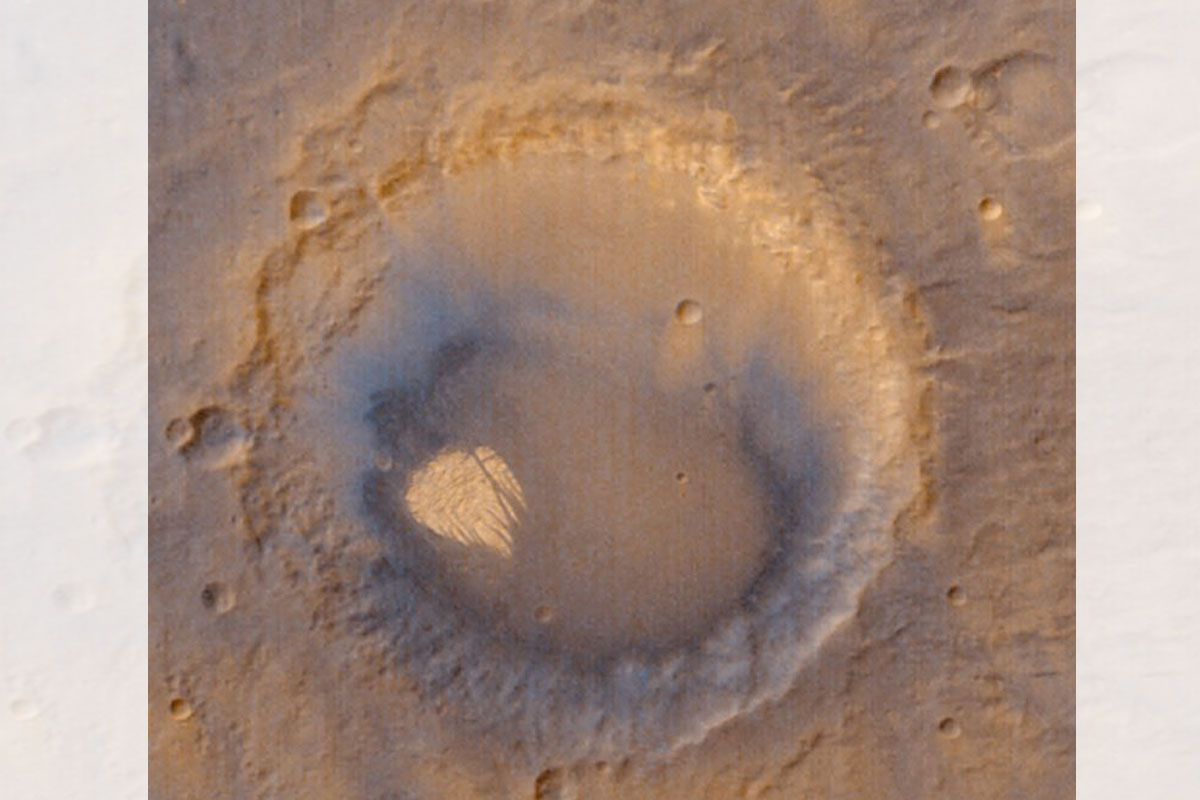
The White Rock Mystery: What is This Odd Feature at the Center of a Martian Crater?
Micah Hanks July 8, 2021
For as long as photographs depicting the surface of Mars have been made available by NASA and other space agencies conducting studies of the Red Planet, online sleuths have scoured the images in search of possible anomalies.
Over the years, claims of everything from alien spacecraft and even possible alien skulls, to Bigfoot have turned up in imagery depicting the Martian surface. However, what this really constitutes is an exercise in pareidolia and only shows us, for the most part, how active the human imagination can be.
Perhaps not everything unusual that has been observed on the Martian surface seems quite so outlandish though. One instance involves a peculiar formation that was first spotted more than three decades ago when the Mariner 9 spacecraft managed to photograph the peculiar feature within a crater located near the Martian equator.
On the 58-mile-wide Pollack Crater floor, there appeared to be an unusual-looking region with a lighter coloration than the surrounding Martian terrain. Estimated to be 8.5 by 11 miles in size (think of a standard sheet of printing paper, albeit greatly enlarged), the weird feature was not only a peculiar whitish color but appeared to possess unusual grooves running along its surface.
 White Rock
White Rock
The anomaly known as “White Rock” within Pollack Crater (NASA/Public Domain).
Dubbed “White Rock,” the object was subsequently also photographed by the Viking Orbiter and presented a unique series of questions. What was the object, and what caused it to stand out so sharply against the rest of the Martian terrain?
Although the notion that it might represent an ice formation immediately springs to mind, White Rock’s location close to the Martian equator would easily rule this out. So what is this unusual feature?
If not ice, some scientists who continued to puzzle over White Rock began to suspect that it might represent a deposit of water-rich sediments, similar to salts that collect along the surface of dry lake beds in deserts on Earth. This would seem plausible, especially because later in 2004, such deposits were indeed found by NASA’s Opportunity rover while exploring the Meridiani Planum.
Backtracking to 2001, however, with the deployment of NASA’s Mars Global Surveyor orbiter and its Thermal Emission Spectrometer (TES) instrument, new clues emerged about the mysterious White Rock at the bottom of Pollack Crater. With the new spectrographic information, scientists were able to determine that White Rock showed no signs of water and, in fact, wasn’t white at all: its coloration closely matched other lighter regions on the Martian surface.
Part of what led to the confusion had been an optical illusion presented by the sharp contrast between the lighter material, which rises from the surface of the feature in the form of ridges shaped over time by wind, placed alongside darker basaltic sand (the latter can particularly be observed toward the feature’s northern side, where a field of dark basaltic dunes exists).
 White Rock
White Rock
Detail of the unusual light colored area within Pollack Crater (NASA/JPL/Public Domain).
While most scientists would agree that wind action played a significant role in the formation of the peculiar White Rock formation, estimates about its direction vary. Some of the grooves apparent on the feature seem to indicate an easterly or southeastern wind that could have shaped them over time, while others interpret that a wind approaching from the west would have done the job.
Although White Rock initially seemed to stand out from other Martian features with its unusual light coloration, similar features have since been located at places like Ganges Chasma, where another bright grooved region rising from the surface can be seen to almost match the mysterious appearance of White Rock perfectly.
So as it turns out, White Rock isn’t so white, and in fact, it isn’t really a rock either… but it helps illustrate how astronomers are closing in on explaining even some of the more plausible anomalies on the Martian surface.
“White Rock”: Not White, Not Rock | Mars Odyssey Mission THEMIS
MU*


















